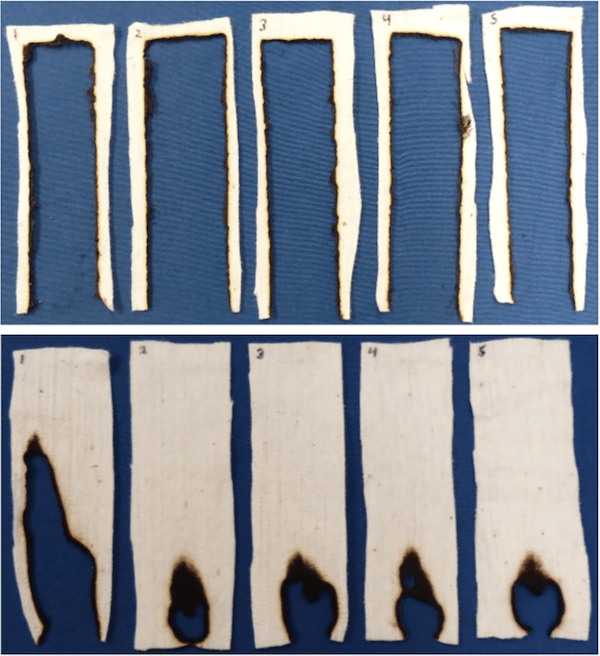Products made from naturally flame-resistant cotton could soon replace the toxic flame-retardants used today. Researchers with the United States Department of Agriculture have developed four cotton lines that naturally resist bursting into flames and even self-extinguish when exposed to fire.
Through genomic analysis of pre-existing cotton cultivars, study author Brian Condon and his colleagues found that flame retardance did not come from a single gene. Instead, they found that multiple genes created a phenotype for fibers with significantly lower heat release capacities. The team then used 11 non-flame retardant cotton cultivars to breed 10 new lines with different heat release capacities.
According to the researchers, of the fabrics made from the recombinant inbred lines (RILs), four exhibited the novel characteristic of inherent flame resistance. “When exposed to open flame by standard 45° incline flammability testing, these four fabrics self-extinguished,” the researchers report.
Flame resistant fabrics are important in the textile industry in order to meet various safety standards for everything from furniture and home decor to toys and clothing. Traditionally, flame retardants have been used to reduce potential fire threats. However, concern about these chemicals has grown in recent years as evidence points to an array of harmful health effects. The chemicals also carry a potential environmental hazard as they don’t break down easily, and can also accumulate in the tissues of humans and animals over a lifetime.
Condon believes the new cotton lines will significantly benefit growers, producers, and consumers. “The incorporation of this trait into global cotton germplasm by breeding has the potential to greatly reduce the costs and impacts of flame-retardant chemicals,” the researchers write.
The researchers’ breakthrough was possible thanks to the game-changing release of five updated cotton genomes in 2020, two cultivated and three wild. Having the wild genomes assembled makes it possible to start using their valuable genes to try to improve cultivated varieties of cotton by breeding them together and looking for those genes in their offspring. This approach combines traditional plant breeding with detailed insights into cotton’s genome. Scientists now know which genes are necessary to make cultivated cotton more resistant to disease, drought, and fire. They also know where to avoid making changes to important agricultural genes. (Source: USDA, Study Finds, Texas A&M)







